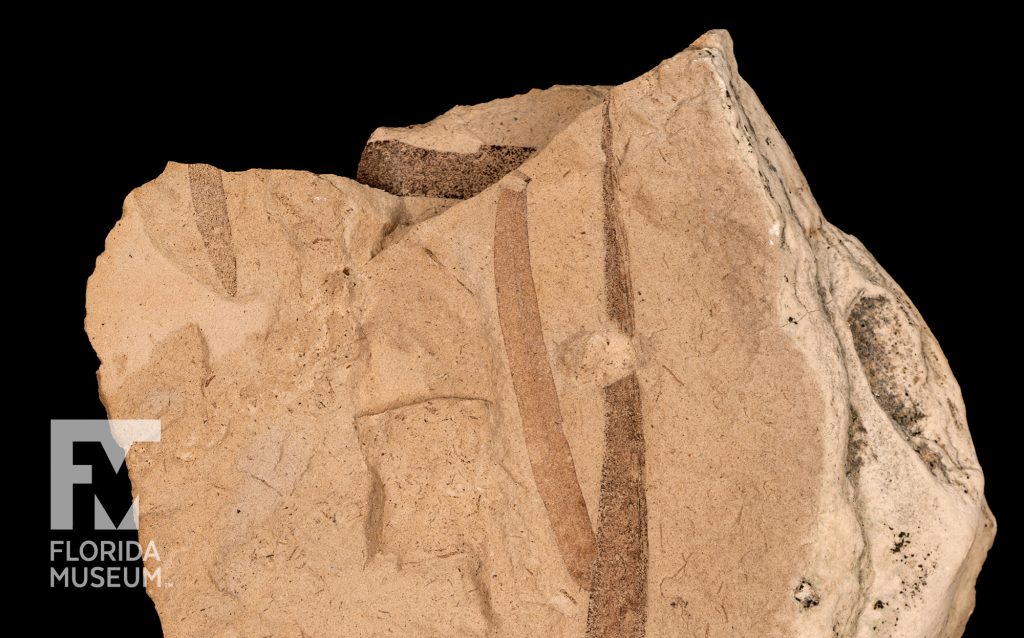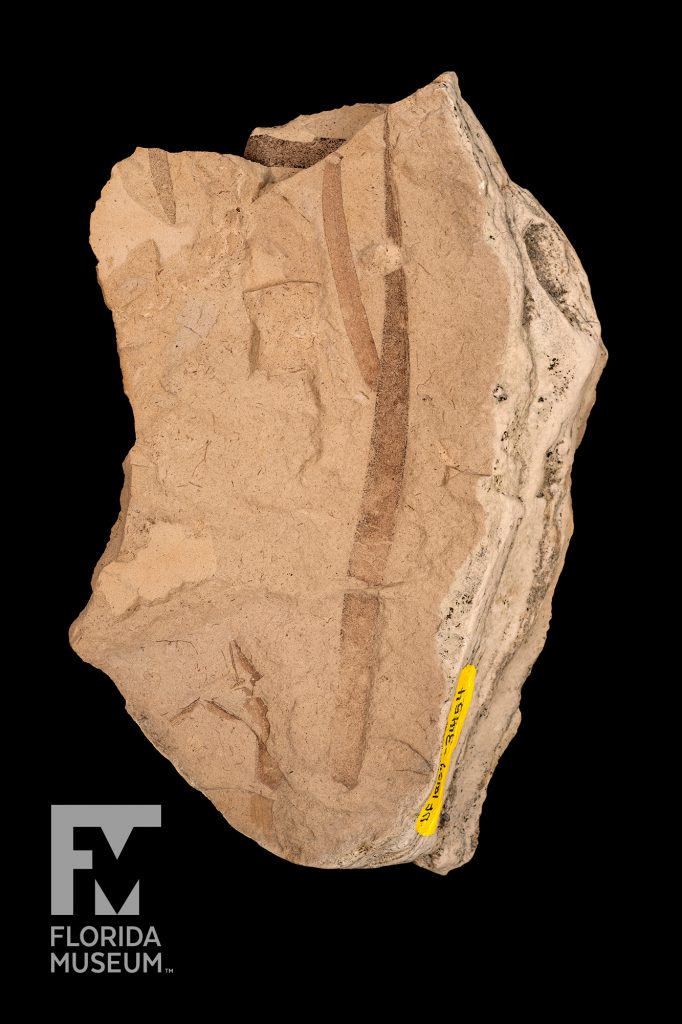Seagrass meadows have functioned as critical nurseries for tens of millions of years, providing food and protection for many organisms. This piece of ancient meadow includes specimens of bryozoans (moss animals), sea stars and brittle stars attached to blades of seagrass.
Summary
Fossil Seagrass (Thalassodendron auricula–leporis)
From Levy Co., Florida
Lived ~47-41 million years ago (middle Eocene)
Collection
Story
From time to time, we get lucky and find rocks that contain truly exceptional fossils. This rare specimen provides a snapshot of a seagrass community that thrived along Florida coasts more than 40 million years ago.
This rock contains fossils that are rarely preserved in the geological record: blades of seagrass, brittle stars and juvenile sea stars. In addition, some seagrass blades are covered by colonial moss animals. This amazing fossil find comes from the middle Eocene Avon Park Formation, which is the oldest geological unit in Florida exposed on the surface.
Very much like modern seagrass beds, this fossil seagrass meadow sustained diverse organisms that used seagrass as a food source, for shelter and protection, or as a substrate for growth. Over 70 species of plants and animals have been found in these fossilized seagrass beds. Today, seagrass meadows represent a major biodiversity hotspot and one of the most valuable coastal ecosystems of Florida. This fossil specimen tells us that seagrass meadows have been around Florida for a very long time. And like today, they sustained and sheltered diverse animals.
Michal Kowalewski
Curator, Invertebrate Paleontology*
Florida Museum of Natural History
Exhibit
On display Sept. 23, 2017-Jan. 7, 2018, Rare, Beautiful & Fascinating: 100 Years @FloridaMuseum celebrated the Museum’s rich history. Each Museum collection was asked to contribute its most interesting items and share the stories that make them special. Though the physical exhibit is closed, this companion website remains online, providing an opportunity to experience the Florida Museum’s most treasured specimens.
Exhibit Area: Objects Tell Stories
Theme: Ancient Sea Life
 Want to see more? Explore more than 300 breathtaking color photos of plants, animals, fossils and cultural heritage materials from the Florida Museum of Natural History’s collections in the award-winning book All Things Beautiful available from the University Press of Florida.
Want to see more? Explore more than 300 breathtaking color photos of plants, animals, fossils and cultural heritage materials from the Florida Museum of Natural History’s collections in the award-winning book All Things Beautiful available from the University Press of Florida.
*This title was accurate at the time the exhibit was on display in 2017. Please visit the collection website to verify current staff and student information.

